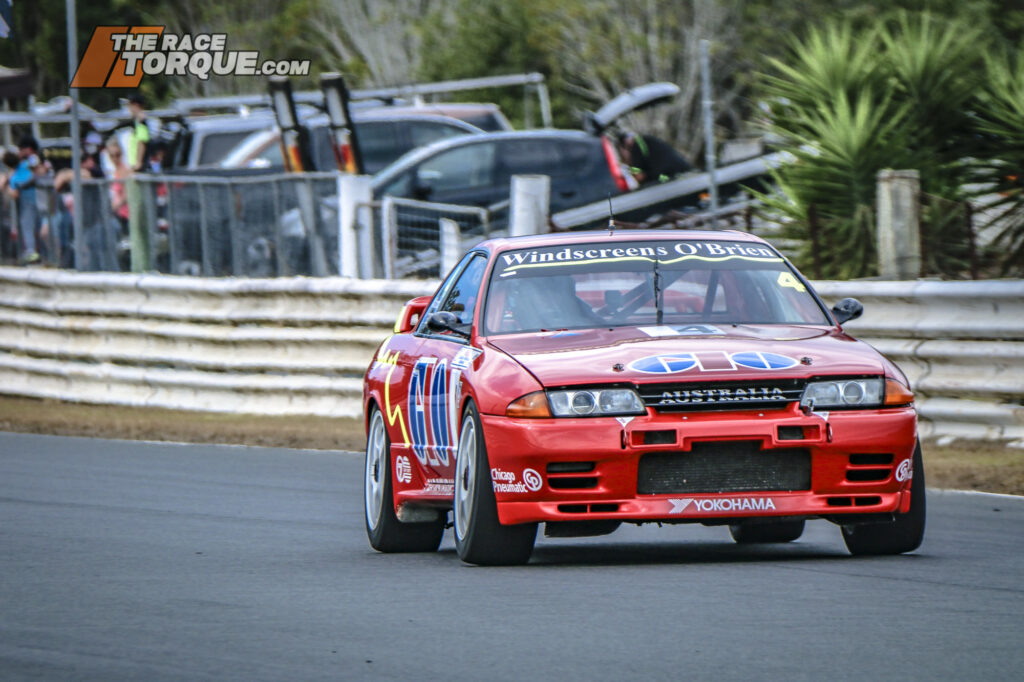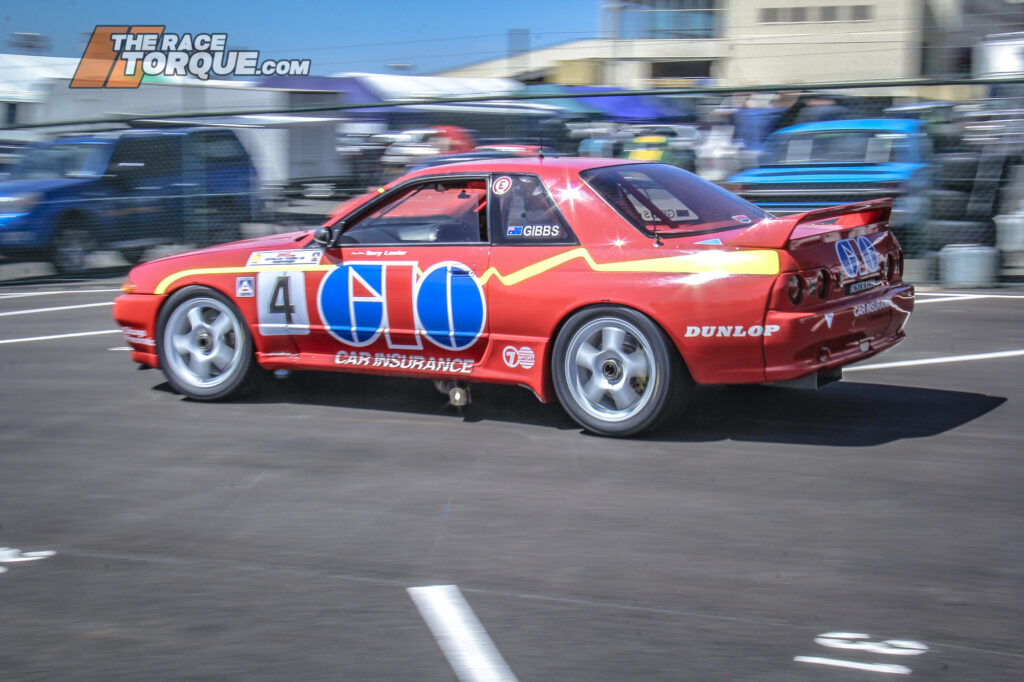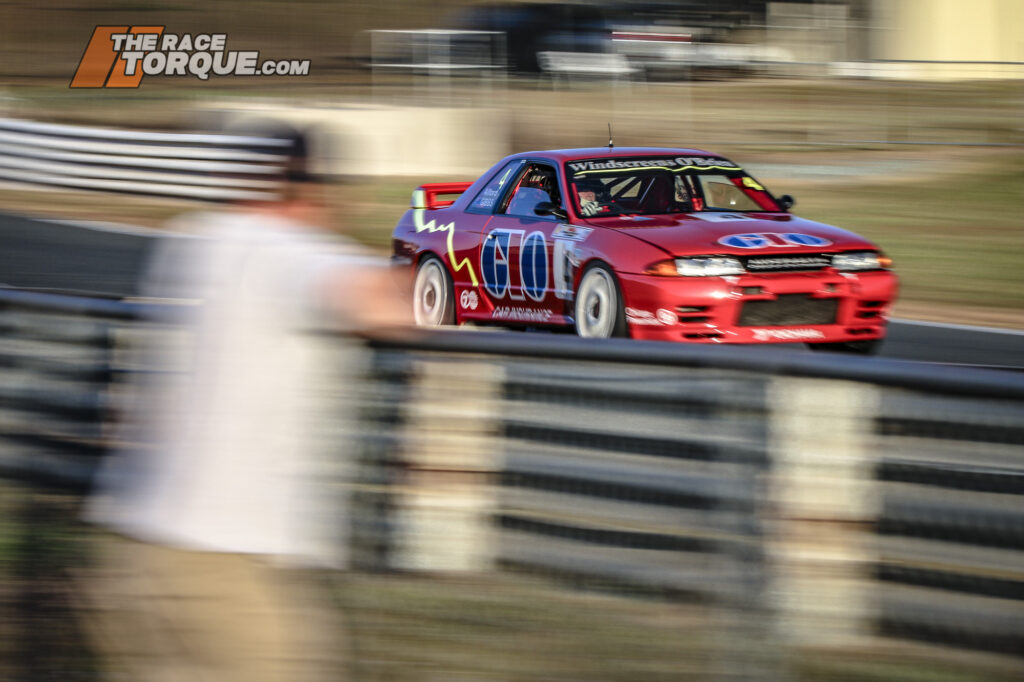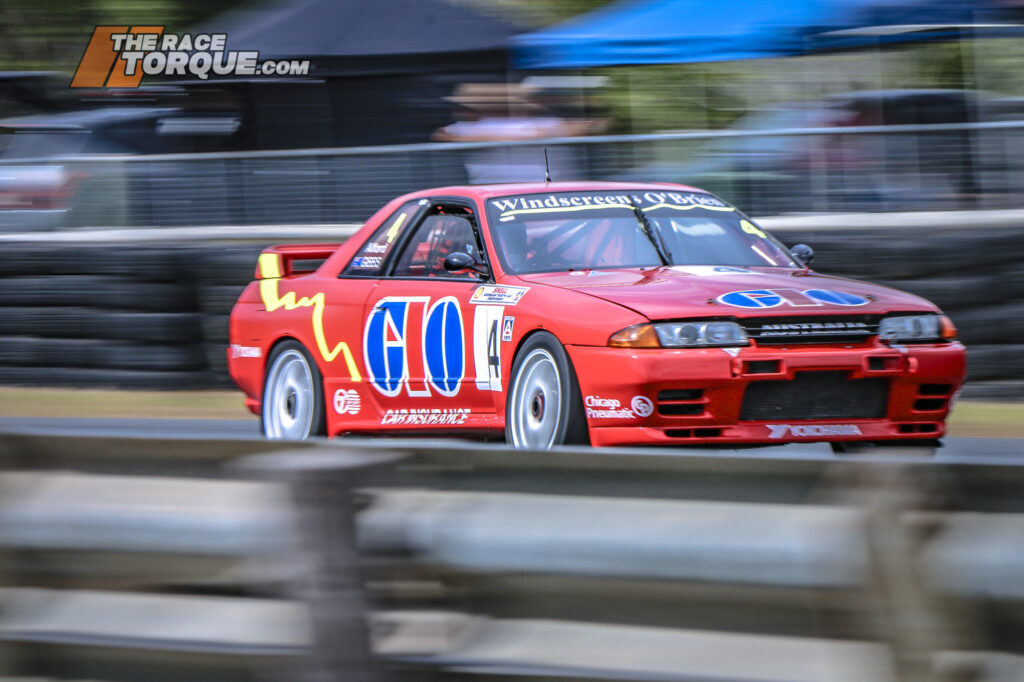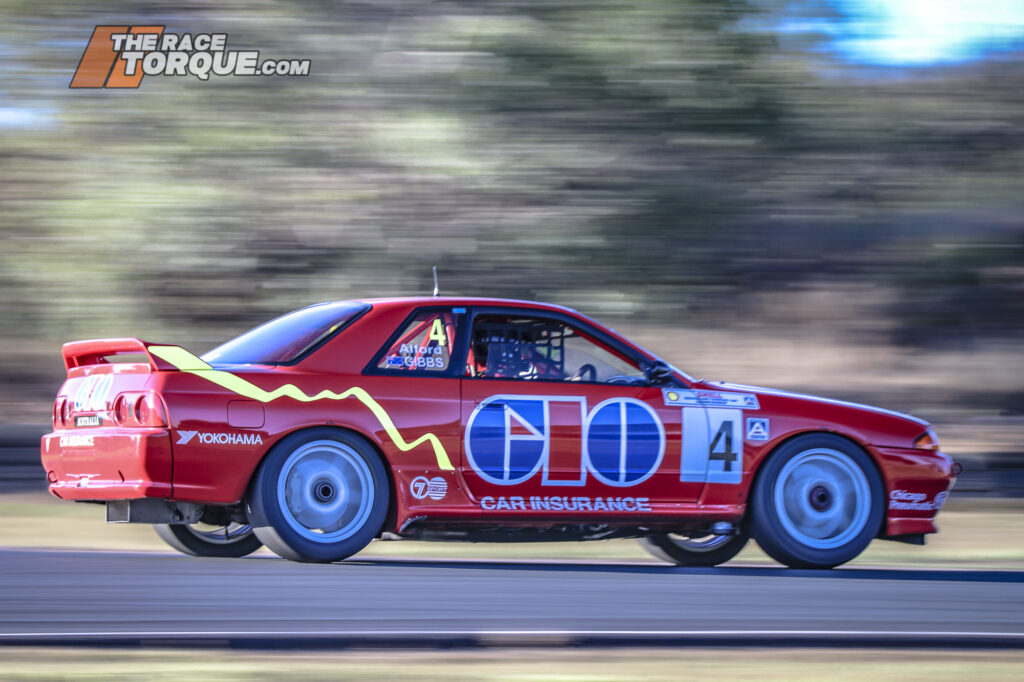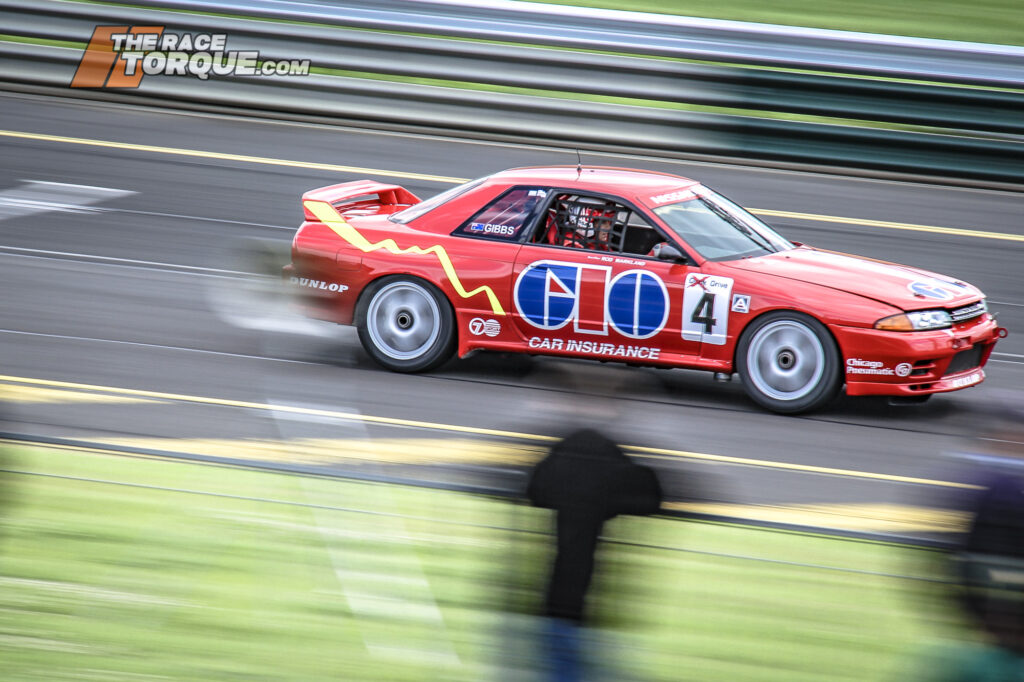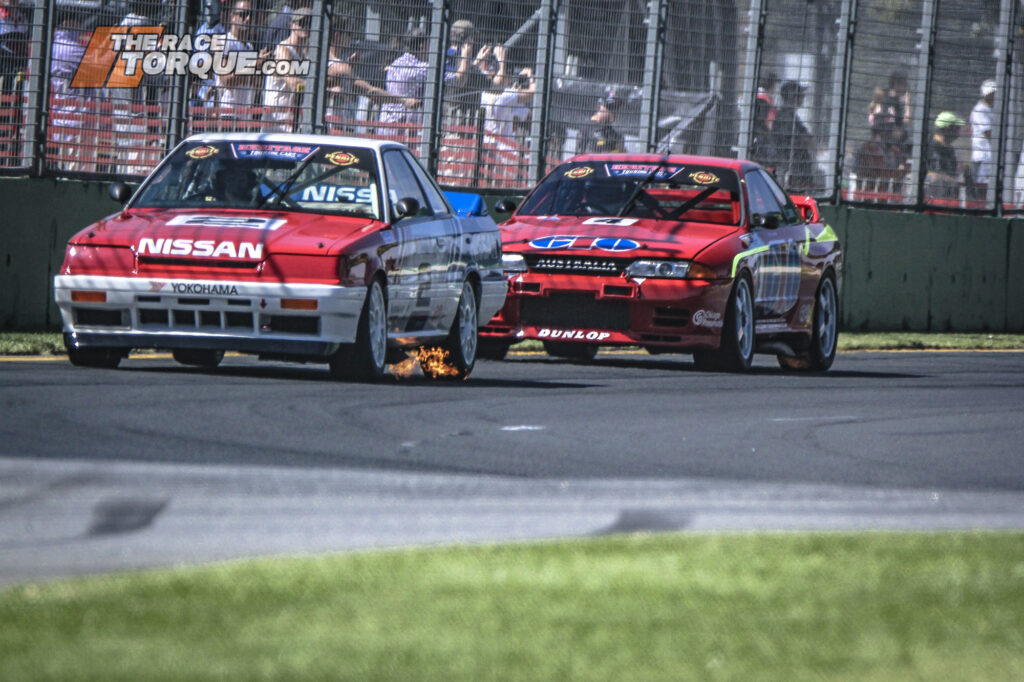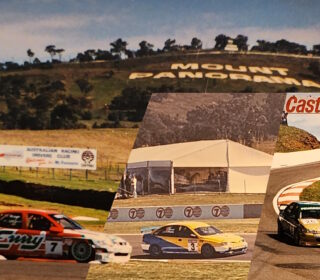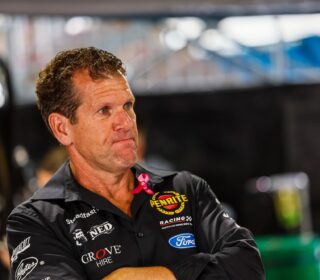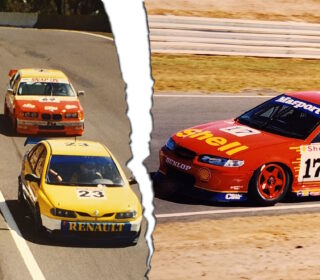$650,000 and a Six Lap Crush
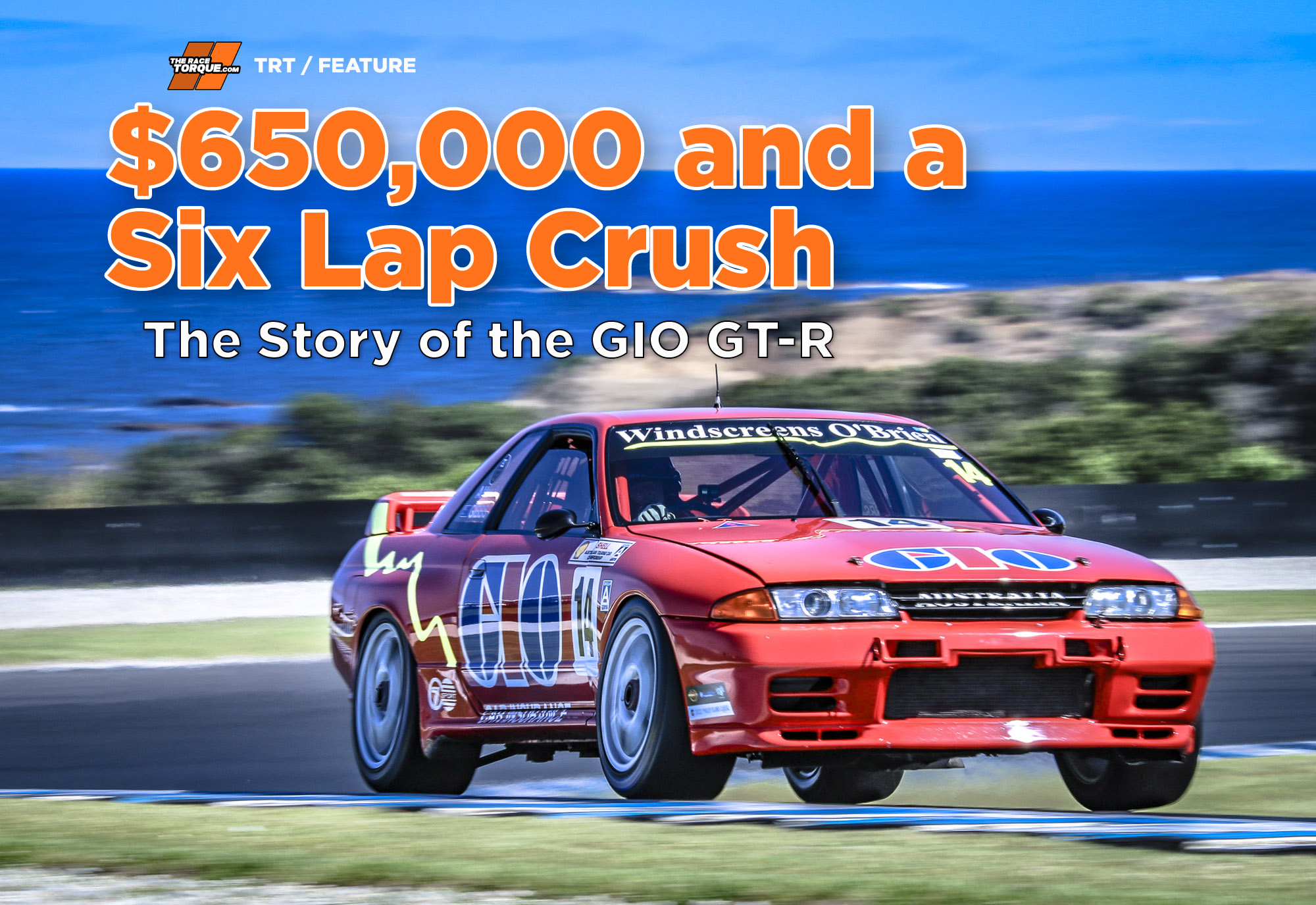
WHILE the Group A Nissan GT-R in Australia is most commonly associated with Jim Richards and Mark Skaife, there was another: the Bob Forbes Racing GIO backed machine, and it was a major player in one of the most turbulent times in Australian motorsport history.
The beginnings of the Nissan GT-R story can be traced back to October 1989, when Gibson Motorsport took delivery of four R32 model road cars from Japan.
After being officially homologated for use from March 1st the following year, the first shakedown of car one took place at Winton Raceway on April 11th, and with Mark Skaife steering it in its competition debut at Mallala on June 8th.
There and then, the field knew it had a serious competitor on its hands.
Running behind schedule, the package was still underdone first time out – after qualifying third, it led the race, before retiring prior to half race distance with its second broken wheel hub for the weekend.
Richards commandeered the car for Wanneroo Raceway, where he finished fourth, while he drove it to victory in the Oran Park finale, sealing Nissan’s first ATCC crown.
Skipping Sandown, developmental issues slowed the car in qualifying at Bathurst, where it set the 11th best time, reportedly with only rear-wheel drive, and following further niggling issues in Saturday afternoon practice, the lead car was covertly swapped to the T-car on the night before the race, somewhat illegally.
The combo blasted into the distance on race day, however, a rear differential failure curtailed their charge.
The parity police were out in force before the 1991 season – the Commodores had less weight and more engine freedoms, while the Sierras also went on a diet and gained a six-speed transmission.
The GT-R meanwhile had its weight lifted from a somewhat unrealistic homologated minimum of 1,260kg to 1,360kg, although it was reported at the time to be a 35kg gain. No matter the figures, it made zero difference to the results.
The gremlins of its rookie campaign were behind the GT-R come the ATCC, when Richards and Skaife or Skaife and Richards finished one-two in the first five ATCC rounds at Sandown, Symmons, Wanneroo Lakeside and Winton.
Originally referred to in the press as “The Weapon”, the car’s “Godzilla” moniker first appeared in April ’91.
The opposition wanted in on Godzilla, but it came at a price…
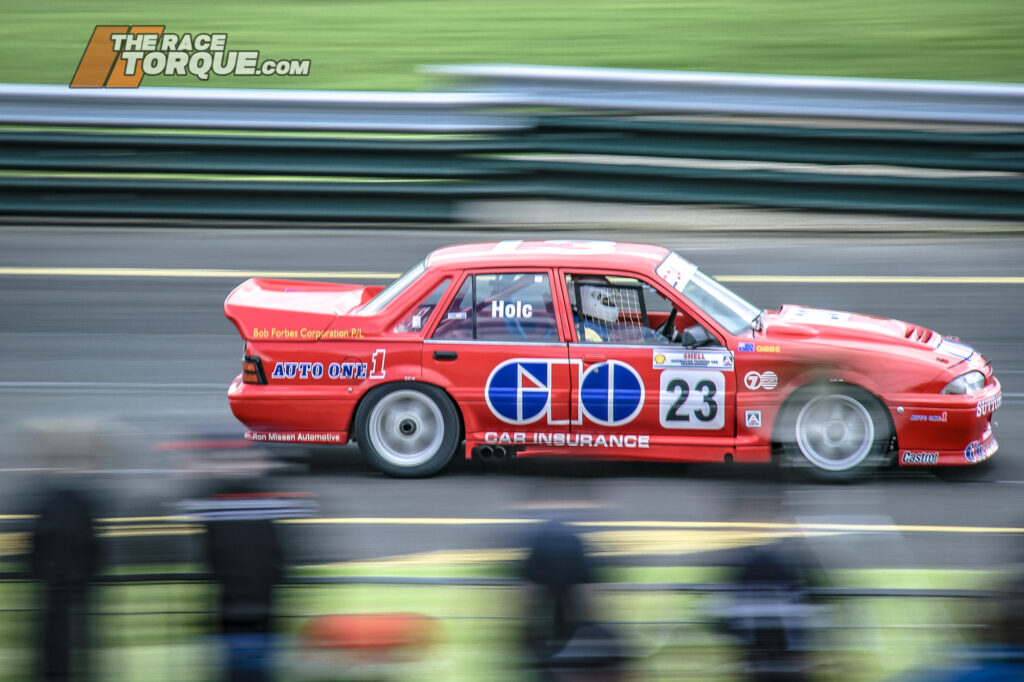
If you can’t beat ‘em, join ‘em…
Bob Forbes was a mainstay of touring car competition throughout the 1970s, with some particularly strong results at Bathurst.
From humble beginnings with Peter Finlay in Fiats in 1969 and ’70, to a Charger, Forbes was a lone ranger in the sodden ’72 race aboard an XU-1 Torana, finishing sixth.
The next year he paired with Dick Johnson in an XU-1, placing fifth, before his personal best of second in ’74 with Wayne Negus in an SL/R 5000.
He later debuted the Channel 9 Camaro with John McCormack in 1979, while he would co-drive with Kevin Bartlett three times, twice in the big blue and yellow Yank tank.
Forbes would re-emerge onto the scene in 1988, entering a VL Commodore at Bathurst for Bartlett and John Harvey, before Mark Gibbs took over driving duties in the ’89 ATCC, pairing with Rohan Onslow in the enduros.
Gibbs had made his Bathurst 1000 debut in 1984 aboard a Mazda RX7 and was highly experienced in production car circles, while Onslow was an open-wheel specialist, with multiple CAMS Gold Stars and European experience to his credit, with the driver choices lauded at the time for supporting young talent.
For the 1990 trip to The Mountain, Bartlett would partner rookie Russell Ingall in the second team car.
The 1991 season started with Gibbs aboard a trusty VL Commodore for the opening rounds at Sandown and Symmons.
At the end of April, Gibbs debuted the new GIO VN Commodore at an Amaroo Park AMSCAR event, before competing in the ATCC event at the same venue, while it was wheeled out again in mid-July at Lakeside.
Hopelessly outpaced by the turbo brigade, there were clearly discussions ongoing in the background between Forbes and Gibson.
Years later, a sandwich board in the pits at an historic meet read:
On Thursday July 25th 1991, Bob Forbes GIO Team handed over a cheque for an estimated $650,000 plus spares (sic) to Nissan Motorsports and took delivery of one of the most technically advanced Group A Touring Cars in the world.
The cheque must have cleared quickly, because the next day the car had a 50 lap shakedown at Amaroo Park with Skaife in attendance. Gibbs debuted it at an AMSCAR meet that weekend, capturing a pair of second-place finishes to Tony Longhurst’s BMW.
Gibbs and Longhurst swapped positions regularly in both heats, with the two races resulting in a combined victory margin of half a second to the Bimmer.
Next up, on the 11th of August, Gibbs raced the car in the ATCC season decider at Oran Park, where he drove from ninth on the grid to fifth at the chequered flag.
The machine was the only customer car built by the Nissan Motorsport squad, although its credentials as a true privateer are arguable – the car was housed at Nissan’s Dandenong factory alongside the works spec machines, where it was fettled by the team’s chief engineer Paul Taylor, who relocated to Melbourne.
There’s no secret that the GIO team functioned in this manner to have the full resources and technical assistance of the Fred Gibson run works team at their disposal.
Why do things by halves, when you could lean on the best GT-R tuners in the world?
One key differentiation for the entries though was Forbes’ Japanese sourced harder compound Dunlops, while the works cars raced exclusively on Yokohamas.
With a tyre war ongoing in the domestic Japanese scene, Dunlop wasn’t keen to send their best rubber to a team so closely associated with their enemy.
The price tag of $650,000 correlates with other reports of the cars being valued at around the $700k mark each, which in today’s inflation-adjusted figures comes in at over $1.3 million, significant wedge in any book.
“When people realised the GT-R was going to be the gun car, they knocked on our door and wanted to run GT-Rs – until we told them the budgets,” said Nissan’s Paul Beranger to Mark Fogarty for Motor Magazine in recent times.
“Two things killed that (customer cars) – one was the budget required, and the second was that they would have to deal through Fred, because Nismo didn’t want to deal with independent teams in Australia. They said they were happy to supply through Gibson Motorsport.
“Fred was successful, of course, with the GIO car which ran under him, but the rest of the people – and I mean oil company-sponsored teams – actually knocked on my door and asked us if they could be part of GT-R. Ultimately they walked away from it because of the cost of doing it, even compared with a Sierra Cosworth RS500.”
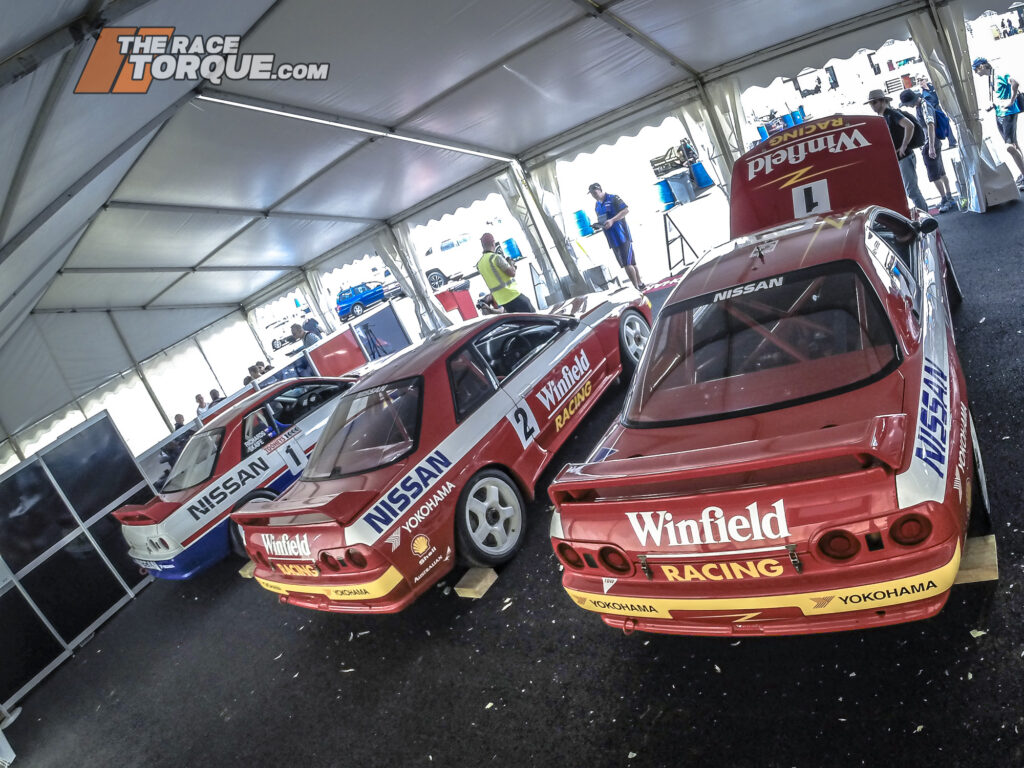
Left to right: cars two, three and five.
Keeping it in the family
All told, Nissan Motorsport in Australia constructed five Nissan GT-Rs.
The first chassis didn’t see out 1990, it was written off in a spectacular accident by Mark Skaife, when he flipped entering the Brabham Straight at the season-ending Grand Prix supports at Adelaide.
The second example, which debuted at the 1990 AGP after the Bathurst 1000 false start, was used throughout the ’91 season, before Richards and Skaife won the Bathurst 1000 in it, the first success for a Japanese car in the event, in a race record time to boot.
Following this, the car was sold to prominent Thai Nissan and Mercedes Benz dealer Prutiral Ratanakul Serireongrith, who raced the car locally in Thailand, plus Malaysia and Japan, with ongoing technical assistance offered by the Australian Nissan squad.
In all, it was the only Gibson built car that ever took on the Japanese squads on their home turf, and with un-credentialed drivers, it claimed a top-ten in the November 1992 running of the Fuji 500.
This chassis returned to Australia in 2007, where it was fully restored to Bathurst-winning spec.
Car three was raced by Drew Price and Gary Waldon to a DNF in the 1991 Great Race, with Skaife jumping behind the wheel late in the event, setting the ultimate Mount Panorama Group A lap record at 2:14.50sec, some two seconds faster a lap than his own race-winning car, and an additional second quicker than the fastest Sierra.
The car subsequently finished third at Bathurst ’92 in the hands of Neil Crompton and Anders Olofsson, before Richards used it to win the final two races of the Group A era in support of Adelaide’s AGP.
This car now resides within the Fox Collection at Docklands in Melbourne.
The GIO car was number four, while the fifth and final car built was the number one Winfield machine, which won the 1992 Bathurst 1000 in controversial circumstances.
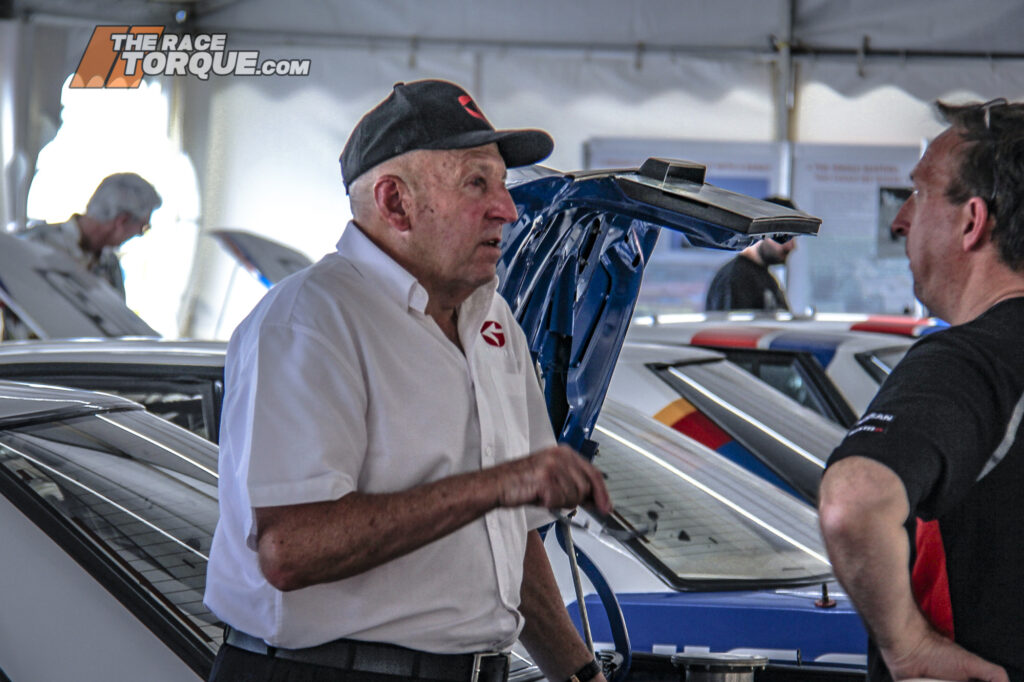
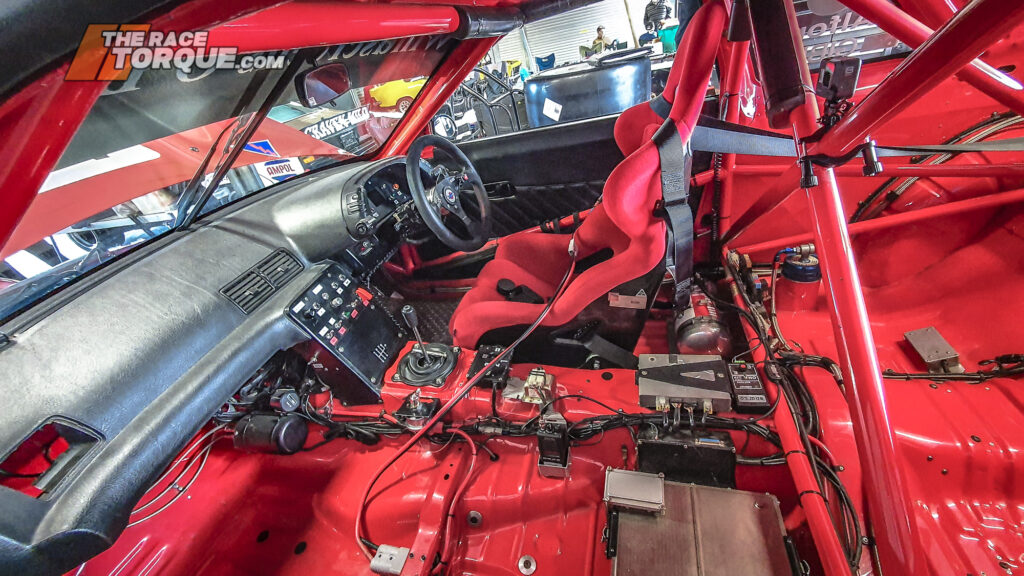
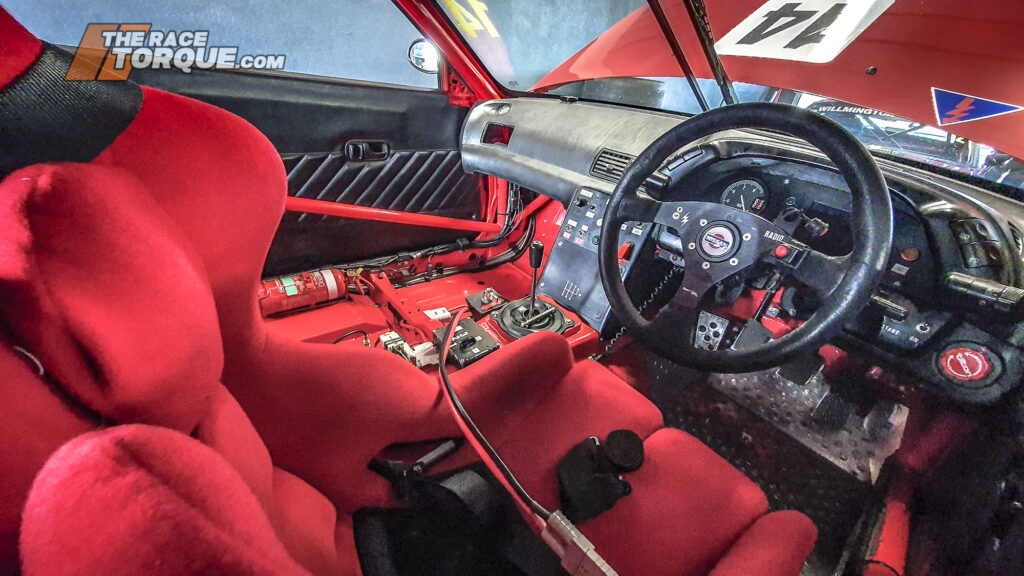
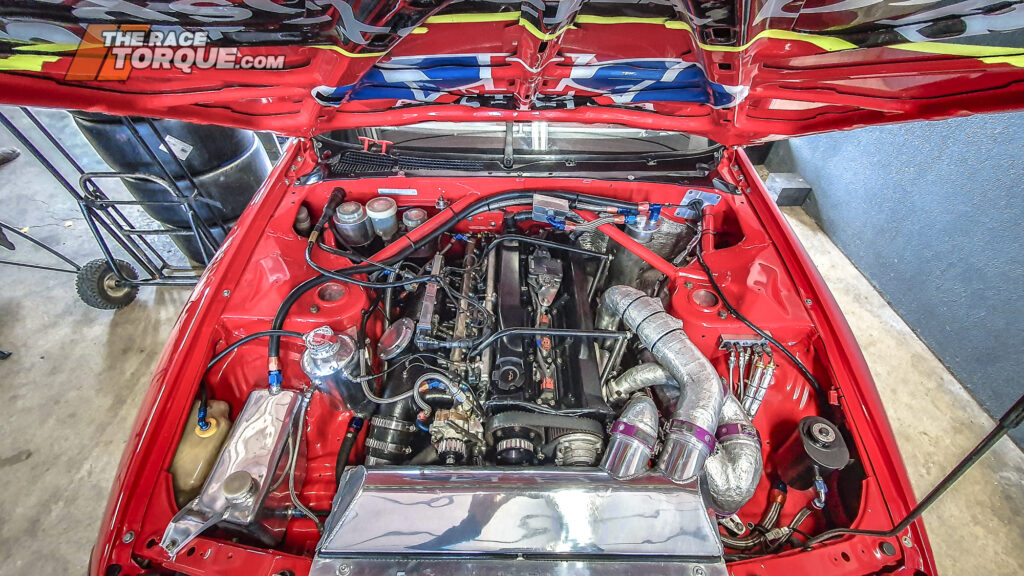
With parts sourced through Nismo proving to be cost-prohibitive, Australian developed components lowered expenses, with items such as CV joints, suspension, wheels and the six-speed Holinger gearbox sourced locally, or the Electromotive engine management system out of the USA.
As an example, the original Japanese wheels were valued at $2,000 a pop, and useful for only one race.
The package produced 650hp, or with the boost wound up to the twin Garrett Turbos in qualifying, 700hp, with the unique four-wheel drive system putting the power down via the 18” x 10” wheels.
One slight drawback with the straight-six engine configuration was that excess weight hung out past the front of the axle line.
However, as previously profiled here on The Race Torque, Alan Heaphy noted some of the homegrown tricks that made the local GT-Rs practically unbeatable.
In short order, the package was better than anything in the world, a point which ensured that international participation from the Australian crew was actively discouraged from head office.
The Japanese didn’t want to be beaten at their own game at home, even if the Australian cars were factory-backed.
However, Skaife did drive for a semi-factory supported Asian-based squad at Fuji and Macau in 1991, with this and other technical crossovers ultimately seeing items such as the Hollinger gearbox head north of the equator.
Six laps at Sandown
Remember when Peter Brock and Jim Richards put the crush on the Bathurst 1000 field in 1979, winning by six laps? The GIO GT-R achieved a similar feat, although on a more low-key scale.
That crowning glory for the car came early in its short top-flight life at the 1991 Drink Drive Sandown 500, with Gibbs and Onslow cruising to victory with a six-lap margin.
However, the state of play in Australian motorsport wasn’t entirely healthy at the time.
With Australia dealing with the recession we had to have, combined with the ever-present Group A politics (such as the $6,000 ATCC series registration fee for competitors), grid numbers were down across the board during the regular season, with a plan floated at one stage by the ARDC calling for production cars to prop up the Bathurst 1000 field.
These factors carried over to Sandown, where only 15 cars faced the starter.
Another mark against the event was that the race was shoehorned into a late-night highlights package on the ABC, hardly a big selling point for the sponsors of the main Nissan squad, and others like Dick Johnson Racing, who stayed at home.
At the chequered flag, there were only six classified finishers: the GIO car, albeit without a working second gear and a long brake pedal, the B&H BMW of Alan Jones/Peter Fitzgerald, the Kevin Waldock/Brett Peters Playscape Sierra, the Gemspares VL, and a pair of Corollas.
Failing to finish were Glenn Seton/Gregg Hansford Sierra, who were challengers until late, both Mobil 1 Commodores, both HRT Commodores and others.
With the factory team missing in action, the GIO squad had Heaphy in their camp for the weekend.
The field looked decidedly sharper at Bathurst, with 49 cars successfully taking to the track, and even against the staunch competition, the red and yellow GT-R was right in the mix.
Another significant difference between the GIO and the works cars surfaced at Bathurst, with the Forbes machine fitted with more standard six spot callipers over the lead team’s specialist four-spot Alcon units, with brake changes taking up to three times longer to complete on the GIO car.
This was to be an issue come race day, with high brake wear, despite significant water cooling, meaning pads were changed on all bar the final service.
Also, the slightly smaller Dunlop tyres meant that the GIO car was the fastest GT-R up Mount Straight in practice, but slower down Conrod, with the harder compound also more difficult to handle over the top of the hill.
Gibbs qualified in second, an effort he repeated in Tooheys Top Gun, with the dream continuing on race day, leading the field away for the opening two circuits, including a brilliant three-second margin at the end of lap one.
Eventually, the team came home third, limping across the line with a bad misfire, in the process winning the Australian Endurance Championship, and also the Dulux Best Presented Car award.
On aesthetics, the car has a lopsided livery, with the yellow swirl featured on different positions on each side of the car, while the ’91 Bathurst race also saw the car carry sponsorship from Capital Motors, a significant Nissan dealer in Canberra.
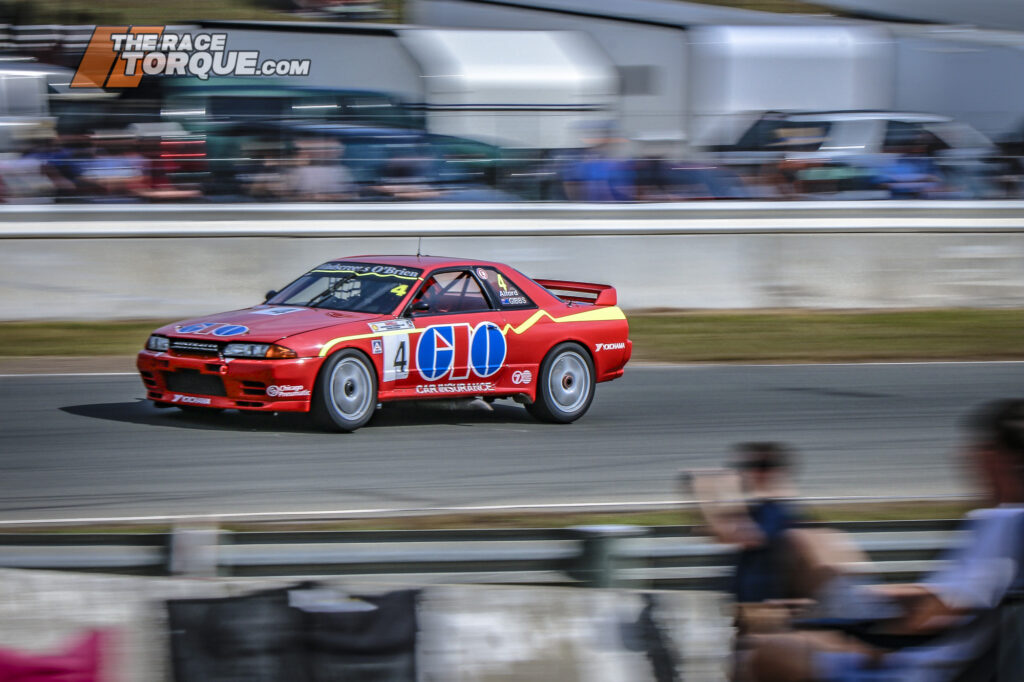
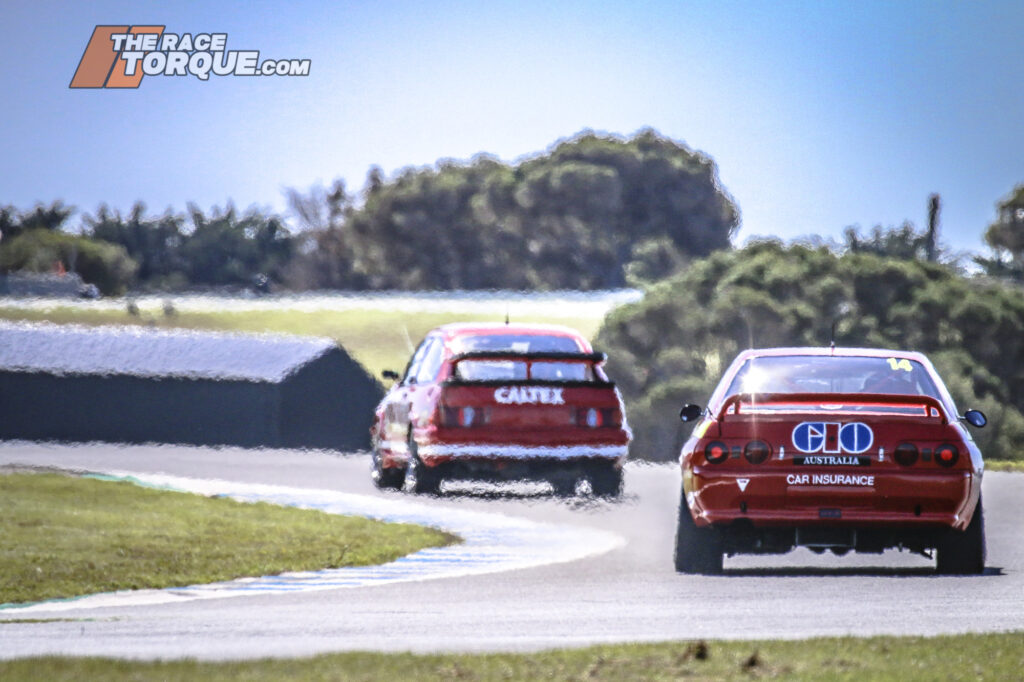
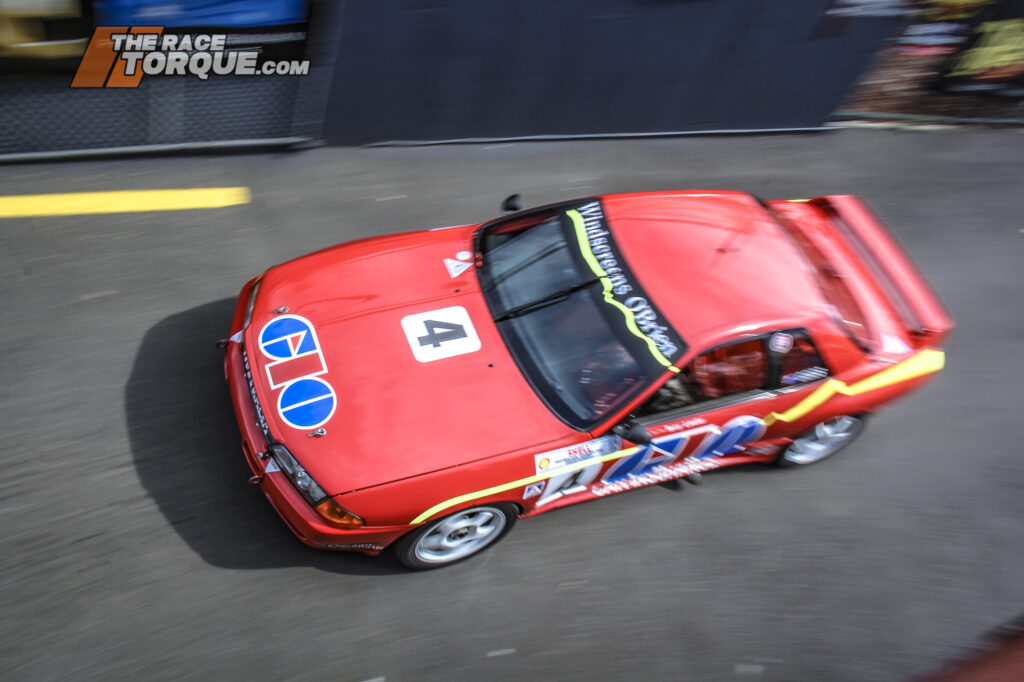
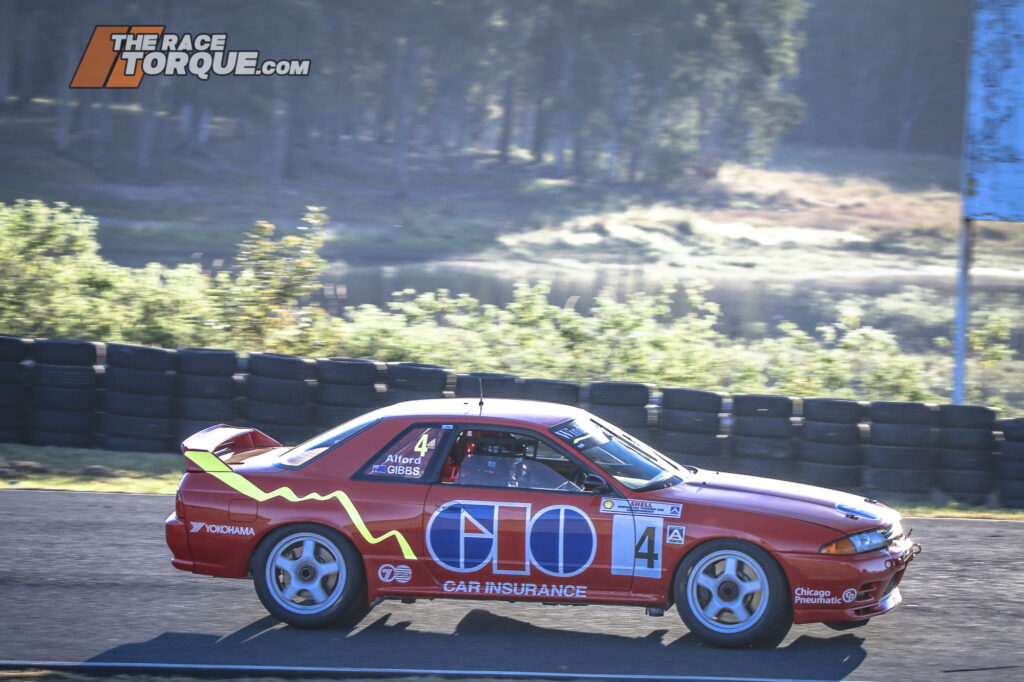
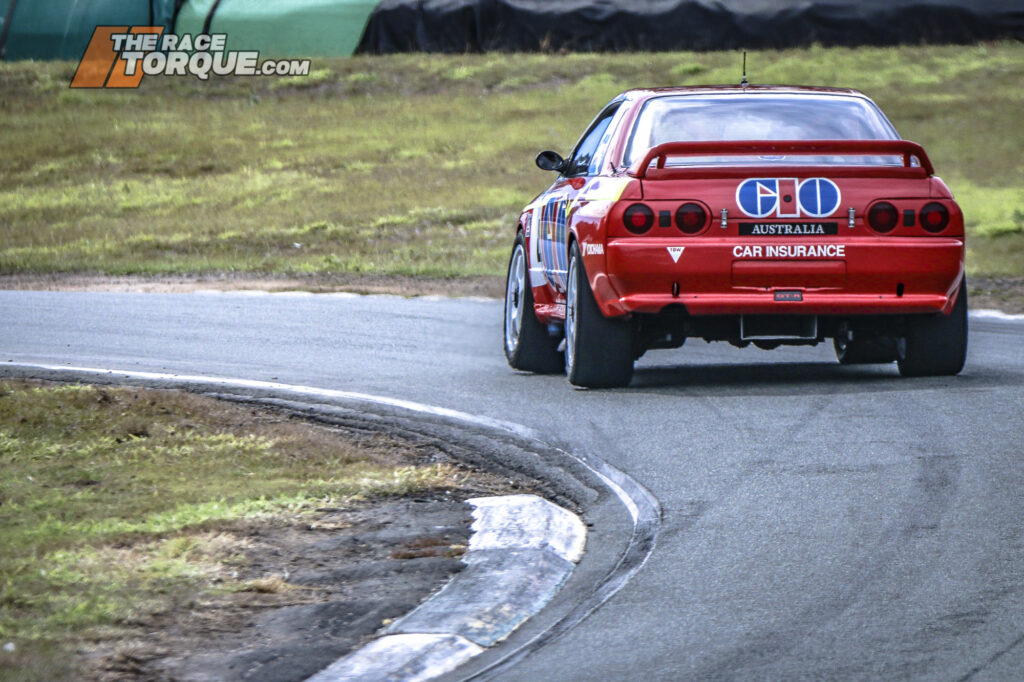
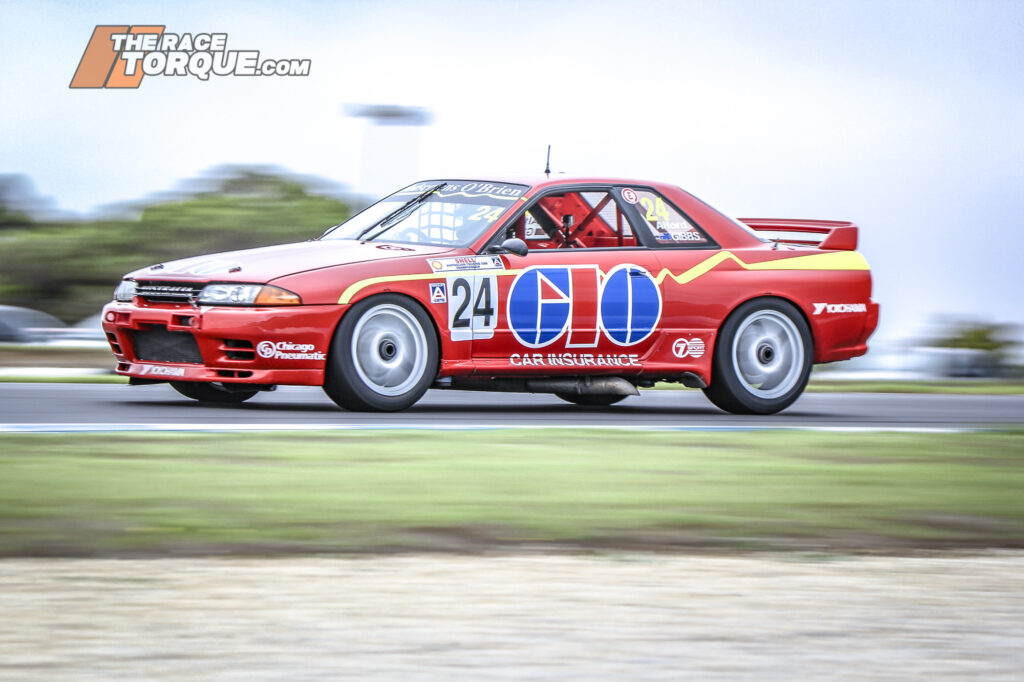
Year Two
The 1992 season was one mired in parity politicking, threats, arguments, accusations, and ultimately a legal challenge in the lead up to Bathurst.
The Fords and Holdens were slugged with a 7,500rpm rev limit plus an extra 50kg, the BMWs an additional 60kg, while the Nissans were hobbled with 40kg of lead, plus a turbo pop off valve set to 1.3 bar of boost, initially robbing the engine of a third of its power, back to about 450hp.
With less power, there was more understeer for Godzilla, and despite the format changes with the Peter Jackson Dash and shorter heats, the now-Winfield backed Nissans continued to dominate.
For Lakeside, the GT-Rs were struck with an additional 100kg of ballast, with the GIO version parked in protest, forcing the old VN Commodore to be pulled out of mothballs for the event.
The championship netted three heat podiums for Gibbs at Amaroo, Mallala and Oran Park, with the Mallala effort paving the way to an overall round podium, and sixth in the end of season standings.
Another highlight was Symmons Plains, where Gibbs easily out-qualified the works cars.
As a sign of the GT-R dominance, Amaroo heat two and Oran Park heat one both featured Nissan podium sweeps, the only times the feat has been achieved in championship history.
The car would also enter a pair of Amaroo AMSCAR meets, with two third places in heats to show for its efforts, while Gibbs unofficially placed sixth at the Bathurst media day in August.
The entire contingency of GT-Rs skipped the ’92 Sandown 500, with Nissan represented on track by a pair of Pulsar SSS production cars, while Gibson, supported by Forbes, took CAMS to court on broad sweeping matters in the run-up to Bathurst.
Technically speaking, the GT-R was the only legally homologated car to the letter of the FISA Group A rulebook, but with only 1.3 bar of boost and a weight of 1,500kg, competitiveness and safety was called into question amidst the legal wrangling and boycott threats.
Ultimately, Nissan lost, with Gibson and Forbes having to sign a disclaimer at scrutineering that they were satisfied their cars would be safe to race.
Further to this, all three cars were completely rebuilt prior to race day with all-new components, while four brand new wheels were installed at all of the pit stops on Sunday, with wheels susceptible to cracking under the strain.
It turned out to be a fraught day for the GIO Nissan.
Firstly, the windscreen became covered with oil early, which saw buckets of water thrown from the pit wall, ala the Holden Racing Team from a year later at Sandown, before an early pitstop remedied the mess.
Later in the rain on Mountain Straight, Wayne Park lost control of his Peter Jackson Sierra in the spray and smote Gibbs in the GT-R, miraculously not involving more cars in the melee.
Then Onslow became tangled with the Rod Jones Sierra at Forrest’s Elbow, which knocked out the GT-R’s oil cooler that was subsequently bypassed, and finally, while exiting the final pit stop in the race-ending storm, the car collected a crew member from a neighbouring garage.
Despite all this, the crew were classified sixth at the red flag.
Following Bathurst, Onslow drove the car to a pair of seventh-place results in the Adelaide GP support races that rounded out the Group A era.
Once retired from touring car competition, the car made a lone appearance in the hands of Rodney Forbes at Eastern Creek in December 1997, with the combo easily winning a pair of sports car races in support of the final ever AMSCAR meet.
Still, in its original condition, the car has subsequently raced extensively in historic competition in the hands of Terry Lawlor, before Tony Alford became its latest custodian.
